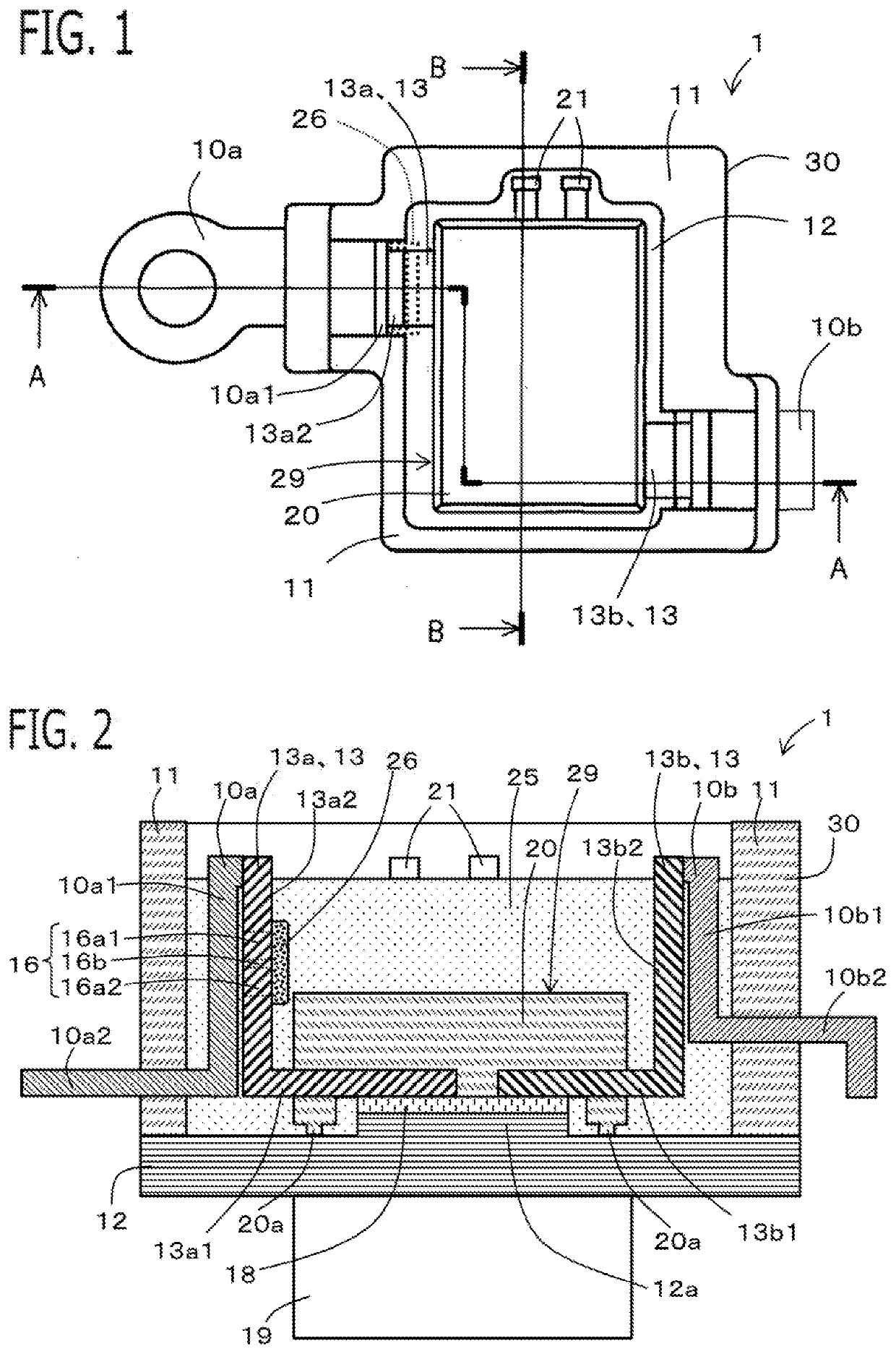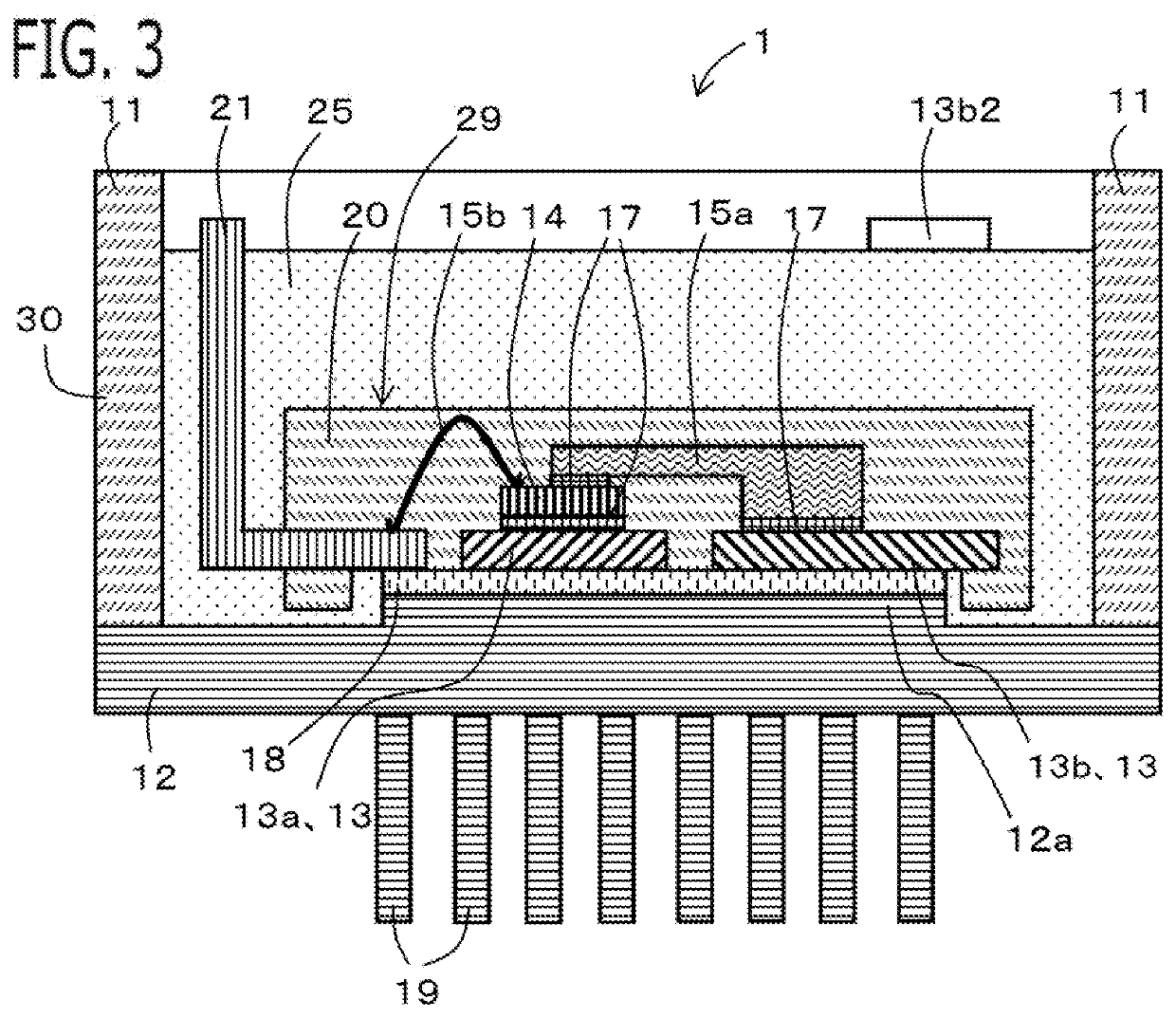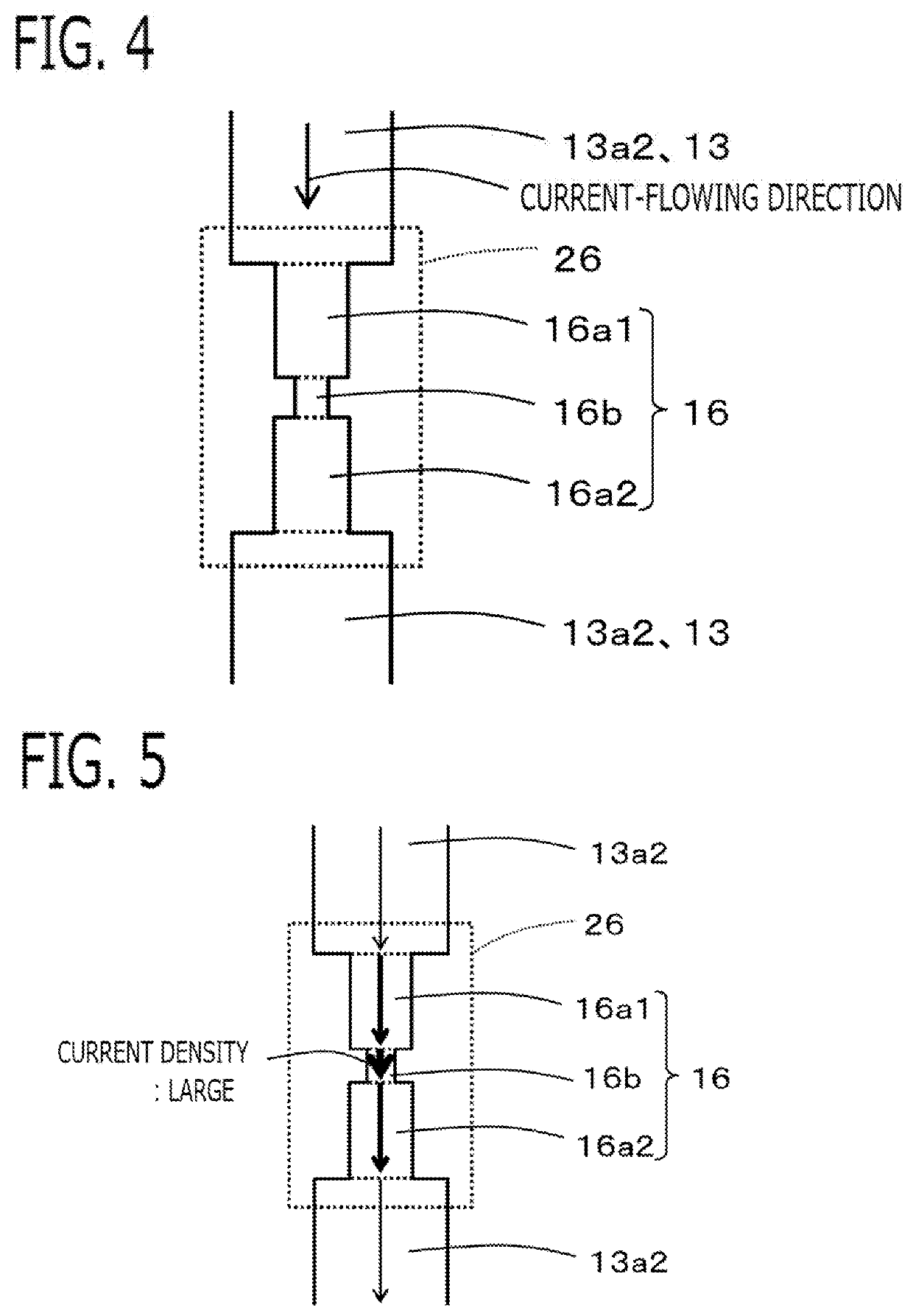Electric-power conversion apparatus
- Summary
- Abstract
- Description
- Claims
- Application Information
AI Technical Summary
Benefits of technology
Problems solved by technology
Method used
Image
Examples
embodiment 1
[0027]An electric-power conversion apparatus 1 according to Embodiment 1 will be explained with reference to drawings. FIG. 1 is a plan view of the electric-power conversion apparatus 1, when viewed from the opening side of a case 30; in order to explain the arrangement of respective components, a sealing resin member 25 is made transparent and is not illustrated. FIG. 2 is a cross-sectional view taken at the A-A cross-sectional position in FIG. 1; FIG. 3 is a cross-sectional view taken at the B-B cross-sectional position in FIG. 1. FIG. 4 is a plan view of a fuse portion 16 viewed from the front. Because each of the foregoing drawings is a schematic diagram, the respective dimensions of each of the members do not coincide with one another in the drawings.
[0028]The electric-power conversion apparatus1 includes an electric power semiconductor device 14, an electrode wiring member 13 connected with the main electrode of the electric power semiconductor device 14, the case 30, and the ...
embodiment 2
[0065]Next, an electric-power conversion apparatus 1 according to Embodiment 2 will be explained. The explanation for constituent portions that are the same as those in foregoing Embodiment 1 will be omitted. The basic configuration of the electric-power conversion apparatus 1 according to the present embodiment is similar to that of Embodiment 1; however, part of the configuration of an electrode wiring member 13 is different. FIG. 9 is a cross-sectional view of the electric-power conversion apparatus 1 according to the present embodiment, when taken at the A-A cross-sectional position in FIG. 1. FIG. 10 is a perspective view of a positive-polarity electrode lead frame 13a.
[0066]As is the case with Embodiment 1, a fuse portion 16 that functions as a fuse is formed in the electrode wiring member 13 (the positive-polarity electrode lead frame 13a). Unlike Embodiment 1, the electrode wiring member 13 (the positive-polarity electrode lead frame 13a) has a small-cross-sectional-area po...
embodiment 3
[0070]Next, an electric-power conversion apparatus 1 according to Embodiment 3 will be explained. The explanation for constituent portions that are the same as those in foregoing Embodiment 1 will be omitted. The basic configuration of the electric-power conversion apparatus 1 according to the present embodiment is similar to that of Embodiment 1; however, part of each of the configurations of a fuse resin member 26 and a positive-polarity external connection terminal 10a is different. FIG. 11 is a cross-sectional view of the electric-power conversion apparatus 1 according to the present embodiment, when taken at the A-A cross-sectional position in FIG. 1.
[0071]As is the case with Embodiment 1, the fuse resin member 26 is configured in such a way as to cover the surface at thickness-direction one side of the fuse portion 16 (in this example, the surface at the side opposite to the side of the positive-polarity external connection terminal 10a). However, unlike Embodiment 1, the port...
PUM
 Login to View More
Login to View More Abstract
Description
Claims
Application Information
 Login to View More
Login to View More - R&D
- Intellectual Property
- Life Sciences
- Materials
- Tech Scout
- Unparalleled Data Quality
- Higher Quality Content
- 60% Fewer Hallucinations
Browse by: Latest US Patents, China's latest patents, Technical Efficacy Thesaurus, Application Domain, Technology Topic, Popular Technical Reports.
© 2025 PatSnap. All rights reserved.Legal|Privacy policy|Modern Slavery Act Transparency Statement|Sitemap|About US| Contact US: help@patsnap.com



